Anybody who has been to Amsterdam has wondered about the bike situation. Why are there so many bikes? When did all this start? Do they cycle under the rain? Even the elderly? And even when you know about it beforehand it is impossible not to be surprised when you see the massive waves of cyclists during peak hours crossing the whole city.
Amsterdam is the second most bicycle-friendly city in the world. Physical and meteorological conditions, as well as political decisions throughout history, have made bikes a staple here. Bikes are way faster, cheaper and ecological, three good reasons for any Dutch person to go everywhere by bike.
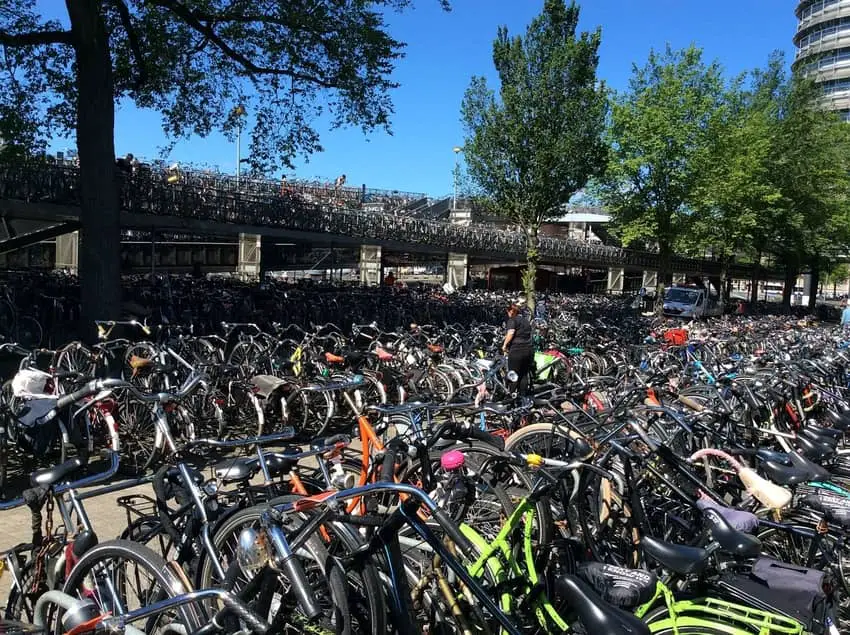
When you are living in the Netherlands, bikes are not an option but a MUST. Everybody expects you to have and use your bike, to be able to cycle, no matter the weather conditions and to understand their weird cycling rules. One thing is sure, cyclists have priority. As soon as you arrive in the Netherlands you need to know: the first priority are cyclists, the second, cars and the third one, pedestrians.
When Did Amsterdam Become the City of Bikes?
Cycling and bikes have become a synonym for Dutch culture. According to the BBC, over 70% of the journeys made in big cities in the Netherlands, such as Amsterdam, are made by bike. It is hard to determine when Dutch started using bikes because it has always been part of their culture, but there are certain events in history that have made of this fact a massive movement, an example for the rest of the world.
First Dutch Bikes
Legend has it that it was the Dutch Timmer who began selling and renting bicycles in 1869. He introduced the bicycles as part of the society and founded the first cyclists’ riding school in the Netherlands. It took several years before the Dutch would develop this market, whereas English brands and manufactures were getting more and more powerful by the time (for more information read here).

In the 1890s the Dutch bicycle industry grew rapidly, which meant lower prices and a more competitive position in the bike’s market. Between 1899 and 1903 the number of bikes in the Netherlands doubled. It started becoming the preferred transportation method for daily life.
Bikes during WWI -WWII
The first big problem to these Dutch bike producers happened after WWI. During this period they had to compete with the German bike producers and international companies coming to the country, which in any case means that the Dutch industry was suffering but not the bikes, being more and more popular every year.
During the war most industries reduced their productions, including, of course, the bicycle production in the Netherlands. One of the biggest difficulties was to obtain spare bike pieces because of the lack of production. In 1941 there were problems with the tires supplies. After 1942 this problem trespassed the tires and it also influenced pedals, lamps and many other bike components. During the last years of the war, many machines from factories were demolished or disassembled by the German forces and transported to Germany to be reused. Bike factories were also affected. Right after the war, it remained difficult to get bicycles and spare parts.
Post-WWII
After both World Wars ended, cars took over. Between 1950 and 1960 the idyllic world cyclists were leaving in was threatened by cars. The postwar economy started growing, which meant more money for cars, infrastructures for these and money for petrol.

During this period of time, Amsterdam suffer changes following a so-called “car-centric urban planning”. This means that all the changes the city was going through, were all car-oriented. Amsterdam was “destroyed” to construct roads, traffic lights and allow cars to circulate. As I explained on one of my latests posts, A Brief History of Amsterdam, during the construction of Amsterdam, around the 16th Century, the priority was to create canals, their main source of income and transport. Houses were constructed around them, and life was made through them. With the arrival of cars, the need for new infrastructures was inevitable, there were no roads for cars to circulate.
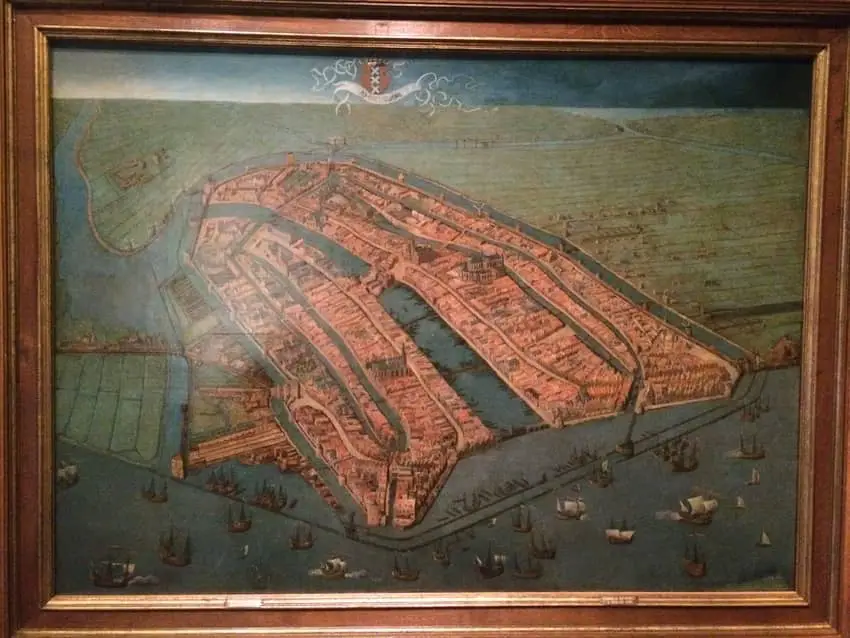
Why aren’t car more popular than bikes? Well, apparently, there were too many accidents involving kids casualties during that time, which make Amsterdamers take over the streets and start demonstrations against the use of cars. This movement was called Stop de Kindermoord, literally, stop children’s murder. The best way to make Dutch roads safe again was to stop promoting the usage of cars.
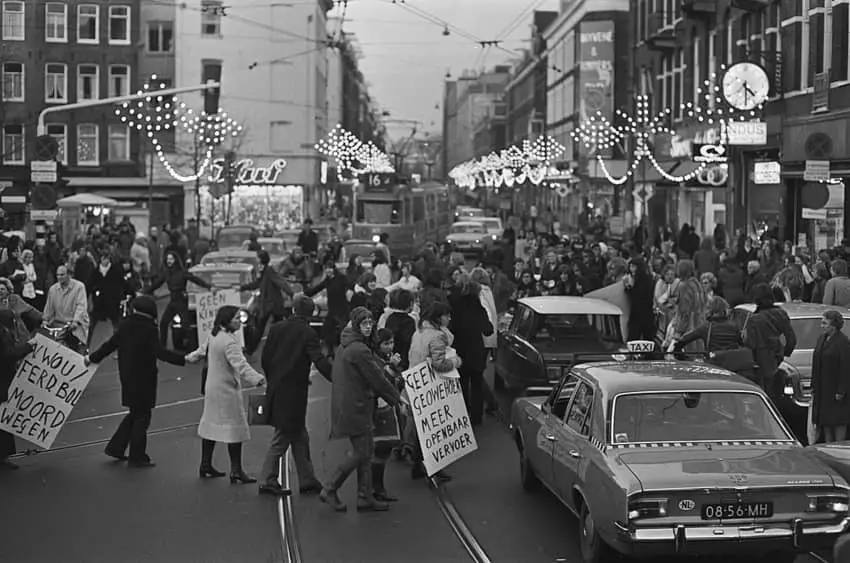
Oil Crisis, Car Crisis
In 1973, a very important event hit most Western countries: the OPEC Oil Embargo lead to an Oil Crisis. The whole world had to reduce the consumption of oil and the Netherlands was no exception. Dutch people used this opportunity to embrace the usage of bikes, implementing policies such as Car-free Sundays (a movement consisting on forbidding car circulations on Sunday, for a whole month, and making picnics on the roads instead) and other smart ideas to encourage people in the big cities to use bikes again, more and more.
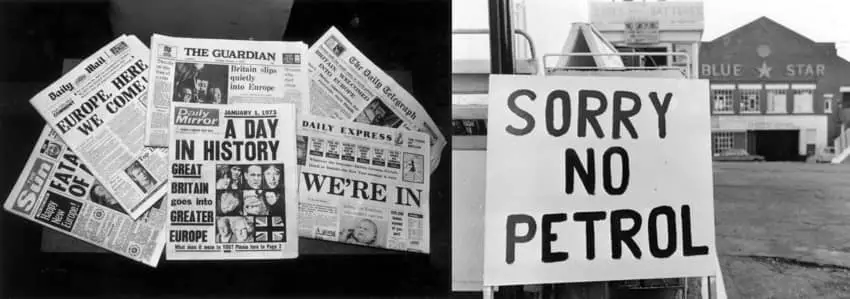
Little by little, Dutch politicians started realising the many advantages of using bikes. This meant a change in the transport policies: after all, bikes were the future and maybe cars were not the best for Amsterdam. In the 1980s, Dutch towns and cities began introducing measures to make their streets cycle-friendly: cycling paths, cycling traffic lights and, of course, cycling policies.
In 1975 the Government decided to try out the creation of bike paths in The Hague and Tilburg, two big Dutch cities. They created separate paths, making a barrier between cyclists and cars, and leaving pedestrians their own space as well. After a year they calculated that the number of people who would use bikes to go to work and school increased up to a 60% in The Hague and up to a 70% in Tilburg. Dutch citizens showed the Government their likeliness to use bikes if there were enough infrastructures and safety measures to do so. This has continued to be the case after decades.
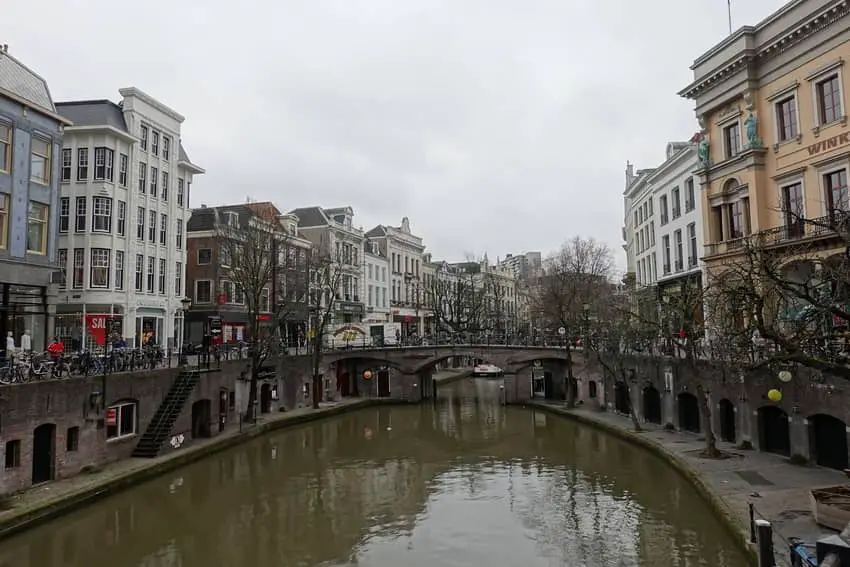
Nowadays there are a lot of Dutch cities that forbid cars to enter their city centres. Utrecht is one of the best examples: de Oudegracht, the most characteristic element of the old city of Utrecht (along the Dom), has forbidden any car circulation, which implies not entering the small streets surrounding it. In the case of other cities, like Amsterdam, cars that have been created before 2005 that haven’t therefore not been adapted to the new air policies, cannot enter the A10 ring road, which means not entering what is considered to be the centre of Amsterdam. If you do so you will have to pay a fine, which in this case can be as expensive as for entering the so-called Low Emission Zone.
Why So Many Bikes: General Reasons
- Traffic: Amsterdam may be the exception to the rule but most Dutch cities were not ready and couldn’t cope with the increasing traffic. Amsterdam is a city that has always represented the avant-garde or pioneer of the Netherlands. Being a very wealthy city also meant having the chance to invest in infrastructures for cars, but the increasing amount of cars was a really big problem anyway. Traffic lights, parking lots and many streets in such a small country cause trouble. Bikes are smaller and need smaller infrastructures.
- Casualties: As I was explaining before, the number of casualties (and most of all, child deaths), was outrageous. Dutch society and the Government in charge of the 70s couldn’t cope with the number of casualties caused by cars. Back in 1971, there were over 400 child deaths in the Netherlands, whereas nowadays with the new system used in all the system, it has gone down to 14 a year.
- Gas Crisis, Economic Crisis, Car Crisis: After the 1973 and the oil crisis, the Government asked the citizens of the Lower Lands to reduce the consume of gas. Soon after that all the city plans and new legislations created were more favourable for bikes against cars. Therefore, it was not only for safety reasons but also for economic reasons.
- Cycling Infrastructures: After all the roads were created for the boom of the cars, the Dutch Government came up with the idea of making this structure suitable for cyclist, reducing the percentage of possible accidents and making cycling more appealing. They decided to reduce the space cars have to circulate and create separate roads for bikes: bike lanes. These were created with their own traffic lights, with a real and distinctive division between them, the road and the pavement for pedestrians. This gave Dutch even more reasons to join the bike movement and leave their cars at home.

After living for many years in the Netherlands I also consider this society to be what they are BECAUSE they use bikes, and not the other way around. It is very hard to understand Dutch people and their concepts without considering as well bicycles. I also believe there are a lot of social reasons besides historical ones that would encourage Amsterdammers to use bikes instead of cars. These reasons are:
Children
The whole Dutch society can be easily defined as trust-worthy. This means that there are not as many safety measures as there are in other countries, because they trust each other and the way everything has to ethically work. In many countries, including mine, Argentina, it is inconceivable for a kid to go alone to school, but this is not the case in the Netherlands. Amsterdam is a little bit of an exception because it is bigger and it has many tourists and traffic as well. However, even in this big city older children go alone to schools. A great way of doing so very easily is by cycling. Kids cycle with their parents to school since they are very little. As you can imagine, being able to bike is indispensable in the Netherlands and by the age of 10 they can go on their own to school every morning, fast and simple.
Nights Out
Even in Amsterdam, the capital of the Netherlands, nocturnal public transportation is not the best option. Even though during the whole day the city is completely connected and reachable by tram, metro, buses, and trains, after midnight the options are reduced to only night buses every hour or so. And some trains going from Amsterdam Central Station. What is not death at night is nightlife. Amsterdam has an amazingly broad range of options for those who want to go out at any given day of the week, which means that the best way of going back home if you are partying anywhere in the city, are bikes.
Student Life
Having cars in the Netherlands is not cheap. The lack of infrastructure, the size of the country, the insurance driving next to canals and cyclists end up making driving something very expensive. Living in Amsterdam as a student can end up being expensive and having a car to just do 3-4km to go to class is not a priority. Most Dutch and international students go everywhere with their bikes, a cheap, practical and ecologic option.
Parking Space
If you have ever been to Amsterdam with your car or wanted to rent one while being there, the number one tip you would have heard or learnt should have been parking your car. If Amsterdam is an expensive country, parking spaces is one of the most expensive luxuries in the city. Leaving your car in the centre (where allowed) costs up to 7,5 euros per hour. Only on Sundays is free and there are very few places to park anyway. If you are a resident, you are allowed to park your car in exchange for an annual fee, which is also surprising for people coming from other countries where parking in front of your house is completely free. And if your car is older than 2005 you cannot leave it in the city centre not even if your residence is there.
Bike Infrastructures
As I mentioned above, in the Historical Reasons, the creation of Infrastructures during the 80s and 90s was something very encouraging for the society to adapt to a two wheels life. Nowadays the Netherlands is one of the examples of bike paradises on Earth: there are not only separate and clear bike lanes but also bike parking spaces in all stations and public buildings, making leaving your bike and commuting to work a very easy and fast task. All bridges, all lifts in all the stations, all trains and metros, as well as all the stairs in public spaces are especially design for cyclist to be able to transport everywhere in the city their bikes.
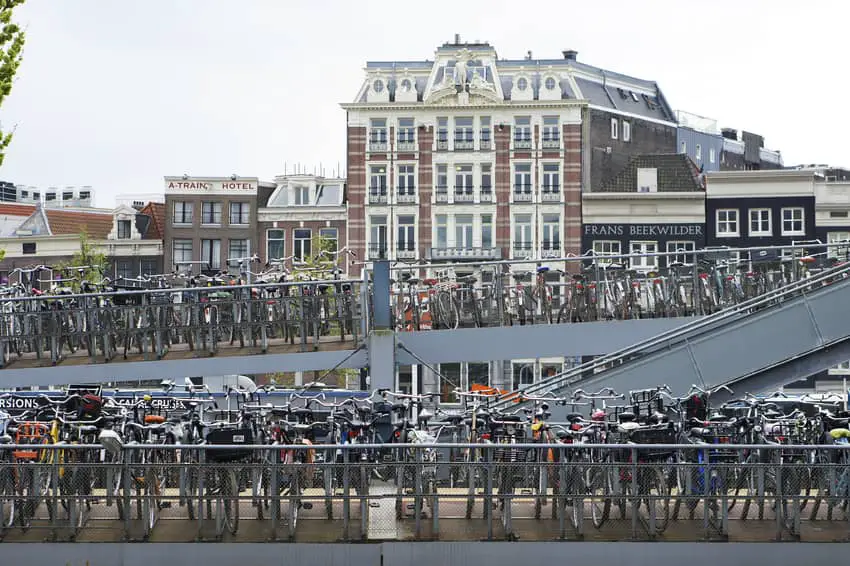

Geography
The possibility of cycling everywhere in the Netherlands, it’s given thanks to its geographical location. It is evident that if you see an American film and kids have to go to school by car because the average distance between the school and their houses is 30 km, they are not going to go back and forth by bike. But the case of Amsterdam and the Netherlands, the longest distance children have to cycle to go to school is 10km, and in Amsterdam I would even say a maximum of 3 or 4. By bike this means only 10 to 15 minutes and this is the same for most adults who work in the city, for grocery shopping and even for family outings in the city. The temperature is a little cold but rather mild most of the year, 99% of the surfaces are flat, which means that most bikes don’t have gears and there is no excuse to use your bike.
Speed
During my first month in the Netherlands my bike broke twice and I realised that a trip that with my bike would take 15 minutes, it meant 1 hour walking and 45 minutes commuting with three busses. I learnt that using a bike was not only a matter of being good for the environment or adapting to what Dutch are used to, but a much more practical and fast way to getting around in any city. Amsterdam is no exception, going anywhere in Amsterdam is also way faster by bike. And if we compare it to a car, it may be the same time, but imagine what that means!
To Sum Up…
Bikes have been part of every Dutch person’s life for over half a century. Living in a city like Amsterdam gives you the advantage of being able to go everywhere by bike. This means not spending money on public transportation, being respectful with the environment and having a much healthier life, making cycling a part of your daily life.